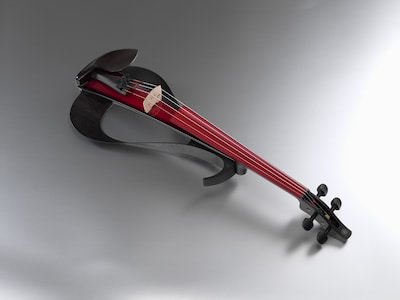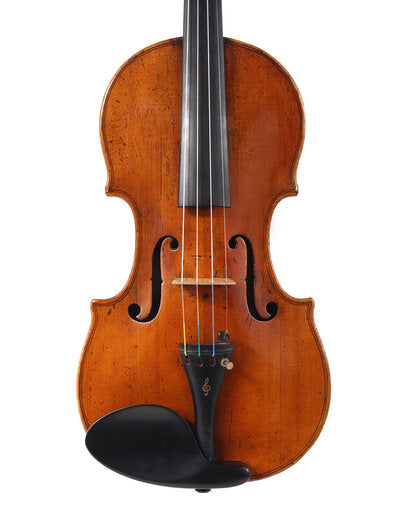Electric Violin in Different Musical Genres: Classical Crossover to Rock and Jazz
Share
The electric violin is no longer just a novelty—it’s a versatile, expressive instrument that has carved out a place in diverse musical styles. From soaring solos in rock bands to lush textures in jazz ensembles and genre-bending classical crossovers, the electric violin allows musicians to push boundaries while still honoring the instrument’s rich tradition.
In this article, we’ll explore how the electric violin thrives across genres like classical crossover, rock, and jazz. Along the way, you’ll discover how to build the right amplification and effects setup for each style and explore Metzler’s extensive collections of electric violins, electric violas, electric cellos, electric upright basses, and other electric instruments.
The Rise of the Electric Violin in Modern Music

Traditional violins have been central to orchestral and folk traditions for centuries. But as amplification technology evolved, musicians began experimenting with electric violins as a way to project sound in larger venues and explore new tones.
Today, electric string instruments are not limited to background textures—they’re front-and-center in genres as varied as metal, fusion, and experimental pop. The electric violin’s ability to handle pedals, effects, and amplifiers gives it a unique edge: it can sound like a violin, a guitar, or something entirely new.
Classical Crossover: Tradition Meets Innovation
Classical crossover is one of the most natural homes for the electric violin. Artists in this genre blend traditional repertoire with contemporary arrangements, often combining orchestral foundations with pop, rock, or cinematic elements.
Why the Electric Violin Works Here
-
Projection & Presence: In amplified crossover concerts, the electric violin cuts through a band or orchestra without losing tonal beauty.
-
Effects for Atmosphere: Reverb, delay, and chorus effects help create cinematic soundscapes that blend well with modern arrangements.
-
Visual Appeal: Many electric violins feature sleek designs that visually suit modern stages.
Famous Examples
Artists like Vanessa-Mae, Lindsey Stirling, and David Garrett have shown how electric violins can captivate audiences by reimagining classical pieces in bold, innovative ways.
Recommended Gear
For crossover, you’ll want a clean amp or acoustic guitar amp, a versatile reverb/delay pedal, and a looper for layering. Pair it with an instrument from Metzler’s electric violins or electric cellos for a rich, modern orchestral sound.
Rock: Power, Grit, and Stage Energy
When you think of rock instruments, guitars and drums usually come to mind—but electric violins bring an exciting edge to the genre. With distortion, overdrive, and stage-ready amplification, they can rival electric guitars in energy and intensity.
Why the Electric Violin Works in Rock
-
Distorted Solos: An electric violin can shred with distortion pedals, creating a fiery lead voice.
-
Dynamic Range: It can alternate between soaring melodic lines and crunchy power riffs.
-
Stage Presence: Its look and sound fit seamlessly alongside guitars and bass.
Famous Examples
-
Jerry Goodman of the Mahavishnu Orchestra used electric violin in jazz-fusion rock.
-
Boyd Tinsley of Dave Matthews Band often integrated violin into rock textures.
-
Modern bands continue experimenting with strings for a dramatic, live sound.
Recommended Gear
For rock, pair a violin from the electric violins collection with distortion, overdrive, or fuzz pedals. Bass amps or powerful guitar amps can provide the necessary punch, while wireless systems help with stage movement. Players of heavier genres might even consider deeper-toned electric cellos or upright basses to match rock’s powerful low end.
Jazz: Improvisation and Sonic Freedom
Jazz thrives on improvisation, and the electric violin is a natural fit for exploring new tonal landscapes. Whether in smooth jazz, fusion, or avant-garde styles, it allows violinists to experiment with textures beyond what an acoustic instrument can achieve.
Why the Electric Violin Works in Jazz
-
Expressive Effects: Wah pedals, modulation, and pitch shifting bring a new vocabulary for solos.
-
Warm or Bright Tones: EQ controls allow players to tailor their sound for different ensembles.
-
Expanded Roles: The electric violin isn’t limited to melody—it can handle comping, looping, and soundscapes.
Famous Examples
-
Jean-Luc Ponty is perhaps the most famous electric violinist in jazz, pioneering fusion with his signature tone.
-
Regina Carter has explored electric violin’s voice in contemporary jazz settings.
Recommended Gear
For jazz, a clean amp with lots of EQ flexibility is key. Use modulation pedals like phasers and flangers for color, plus loopers for building layered improvisations. An electric viola or electric violin can both shine in this genre, depending on whether you prefer mid-range warmth or brighter highs.
Beyond Genres: Experimental and Fusion
Electric violins aren’t limited to these three genres—they’re also at home in hip-hop, EDM, film scores, and even metal. With the right effects, your violin can mimic synthesizers, guitars, or entirely unique instruments.
If you want maximum flexibility, consider exploring Metzler’s full electric instruments collection, which includes violins, violas, cellos, and upright basses—all built to handle amplification and effects with clarity and power.
Choosing the Right Electric Violin Setup for Your Genre

Here’s a quick guide to help you decide:
|
Genre |
Best Instrument Options |
Core Effects |
Amp Type |
|
Classical Crossover |
Reverb, delay, chorus |
Acoustic/clean amp |
|
|
Rock |
Distortion, overdrive, fuzz |
Guitar/bass amp |
|
|
Jazz |
Wah, modulation, looper |
Clean amp with EQ |
Final Thoughts
The electric violin is one of the most adaptable instruments on today’s stage. Whether you’re pushing boundaries in classical crossover, turning up the volume in rock, or improvising freely in jazz, the electric violin gives you the tools to expand your sound.
By pairing your instrument with the right amps, pedals, and recording gear, you can shape your tone to fit virtually any musical context. Explore Metzler’s full range of electric instruments—including electric violins, electric violas, electric cellos, and electric upright basses—and discover how your instrument can take you into new musical worlds.

